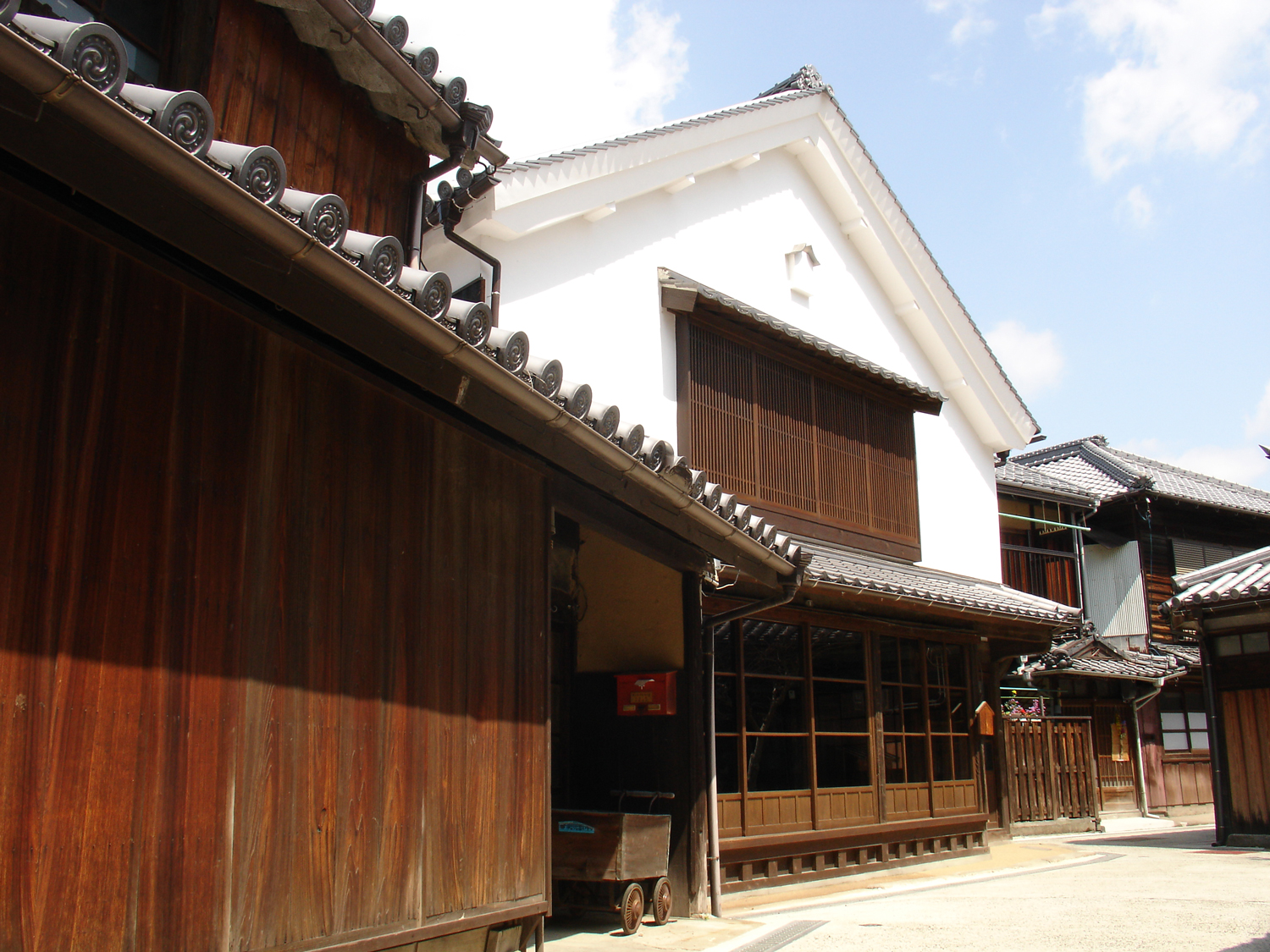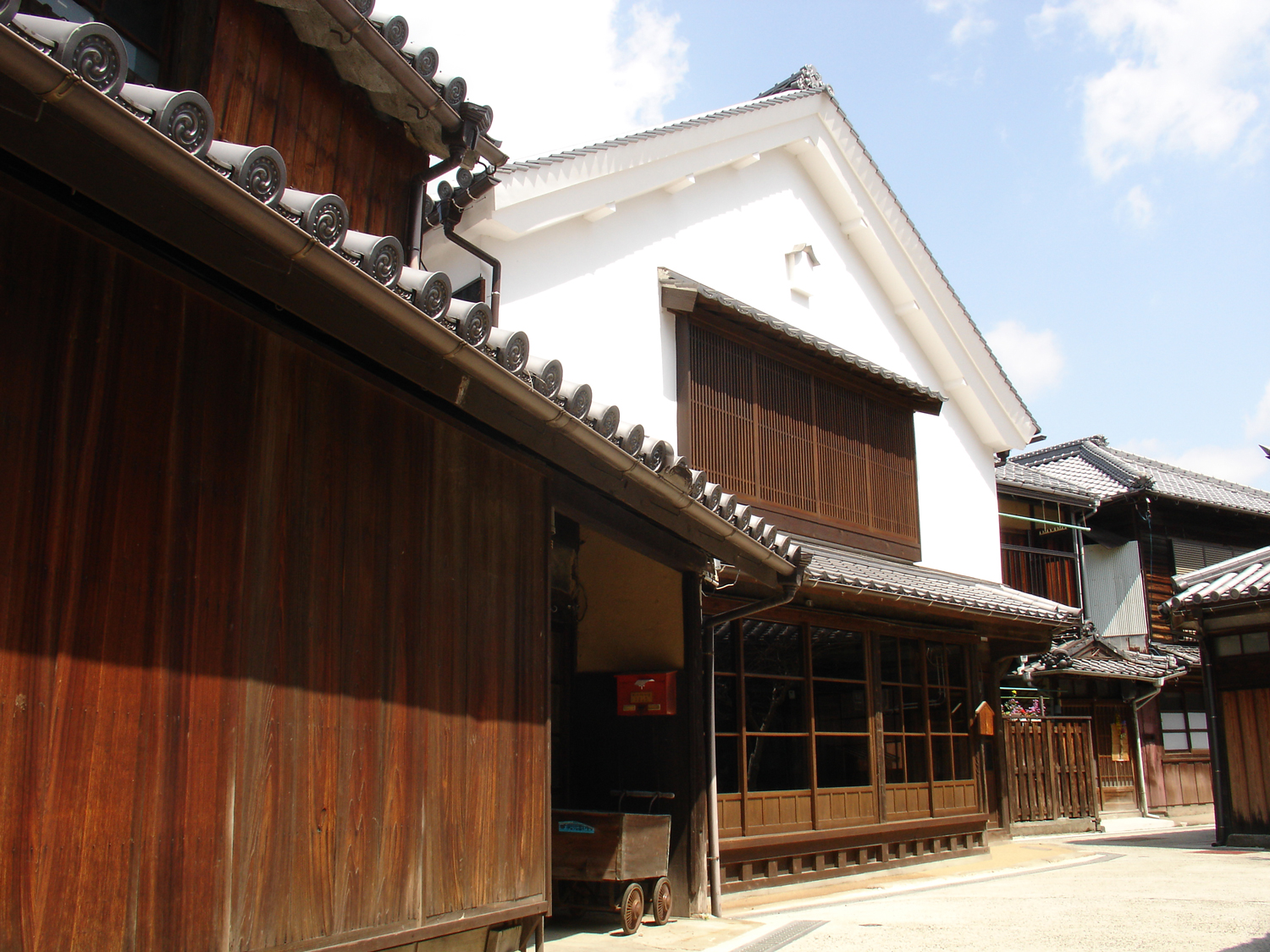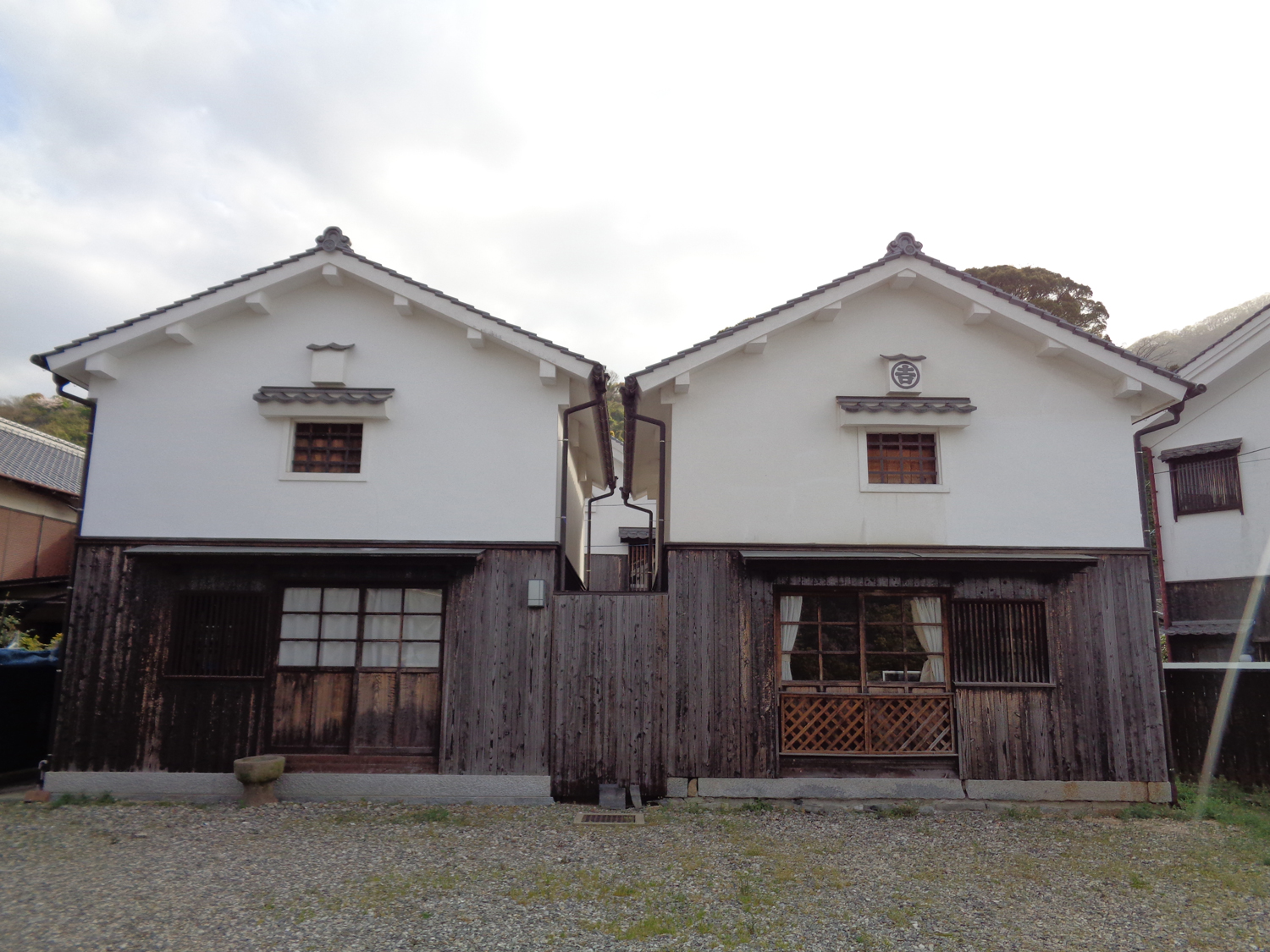旧柴屋住宅 Former Shibaya Residence
旧柴家住宅は、18世紀後半に、近隣の大町(現・豊町大長)の庄屋を数代にわたって務め、御手洗の年寄り役として尊敬されていた高橋家の豪商のために建てられたもので、「柴家」の名は「屋号」と呼ばれている。柴屋という名前は、家系や商売の系譜を表すために、家や商家につけられた「屋号」である。これは、平民が正式な姓を名乗ることを禁じられていた江戸時代に、家系を区別するためにつけられたものである。柴家住宅は2004年に呉市の有形文化財に指定され、現在は御手洗の町立博物館として利用されている。非機械式冷蔵庫(アイスボックス)やアンティークの浴槽、食料を入れる陶器の容器など、生活に密着した年代物を展示している。
柴家住宅は、御手洗で最も多くの17~18世紀の建物が並ぶ常盤通りに面している。この地域の伝統的な雰囲気を保つため、この通りの送電線は地下に埋められている。柴家住宅は、トキワ通りに並ぶ他の建物と同様に、2階の天井が低く、窓や出入り口を木製の格子で覆っている。瓦葺きの屋根と灰白色の漆喰を格子状に敷き詰めた黒スレート壁(なまこ壁)は、昔の木造の板葺き屋根よりも耐火性に優れている。このような建築様式は、細長いファサードと細長い痩せ型の建物から「うなぎの寝床」と呼ばれるようになった。このような形になったのは、ファサードの幅で各家庭の支払いを決める税制があったためと考えられています。 柴家住宅がトキワ通りの他の住宅に比べて幅広であることは、高橋家の裕福さを反映しているといえます。

日本で初めて海岸線の完全な測量を行ったことで知られる地図製作者の伊能忠敬(1745~1818)は、1806年に御手洗のある大崎下島の海岸線を起草する際に、柴家邸に3日間滞在している。 この出来事を捉えたのが『伊能忠敬御手洗測量之図』であり、忠敬の地図作成の過程を描いた2枚の図のうちの1枚である。また、忠敬が黒い靴下を履いて黒い傘を持っているのが忠敬であることを記したメモが付属しており、忠敬の姿がはっきりしている唯一の絵でもある。原画は入船山記念館に展示されているほか、その写しが柴家住宅の向座敷に保管されており、忠敬の作品の他の図や記録が残されている。書斎の窓から外を見ると、1806年に描かれた絵図と同じ海岸線の景色が広がっている。

The Former Shibaya Residence was built during the late eighteenth century for a member of the Takahashi family, a family of wealthy merchants who served for several generations as headmen of the nearby town of Ōchō (now Yutakamachi-Ōchō) and respected elders of Mitarai. The name Shibaya is a “house name” (yagō), which were usually given to residences or merchant stores to identify a family or business lineage. This tradition emerged to differentiate families during the Edo period (1603–1867), when commoners were prohibited from adopting official family names. The Shibaya Residence was designated a Tangible Cultural Property by the city of Kure in 2004, and the building now serves as Mitarai’s town museum. Its exhibits include vintage items from everyday life, such as a non-mechanical refrigerator (icebox), an antique bathtub, and ceramic containers used for storing provisions.
The Shibaya Residence faces Tokiwa Street, which has the largest collection of seventeenth- and eighteenth-century buildings in Mitarai. Visitors may notice a lack of utility poles anywhere in the neighborhood. To preserve the traditional ambience of the town, power lines were installed underground.
Like most of the buildings lining the street, the Shibaya Residence has a low second-floor ceiling, as well as wooden lattices covering its windows and entrances. Tiled roofs and black tile walls covered in a grid of grayish-white plaster (known as namako kabe, or
“sea-cucumber walls”) make these buildings more fire-resistant than the shingle-roofed wooden structures of earlier times. The narrow façades and long, skinny dimensions of the buildings also earned the architectural style the name “eel bed” (unagi no nedoko). The style is believed to have developed because of a system of taxation and compulsory labor that determined each household’s tribute partially by the width of its façade. The fact that the Shibaya Residence is wider than many other homes on Tokiwa Street reflects the relatively higher status of the Takahashi family.

The famous cartographer Inō Tadataka (1745–1818), who is known for carrying out the first complete survey of Japan’s coastline, stayed at the Shibaya Residence for three days in 1806 while drafting the coastline of Ōsaki Shimojima, the island where Mitarai is located. This event has been captured in the Inō Tadataka Mitarai Cartography Illustration (Inō Tadataka Mitarai Sokuryō no Zu), notably one of only two illustrations that depict Tadataka in the process of his cartographic work. It is also the only illustration in which he is clearly identified: the picture came with a note stating that Tadataka is the man wearing black socks and holding a black umbrella. The original illustration is displayed at the Irifuneyama Memorial Museum, and a copy is kept in the Shibaya Residence’s detached study, along with other charts and records of Tadataka’s work. The view of the coastline from the study window is still recognizable as the one depicted in the 1806 illustration.


